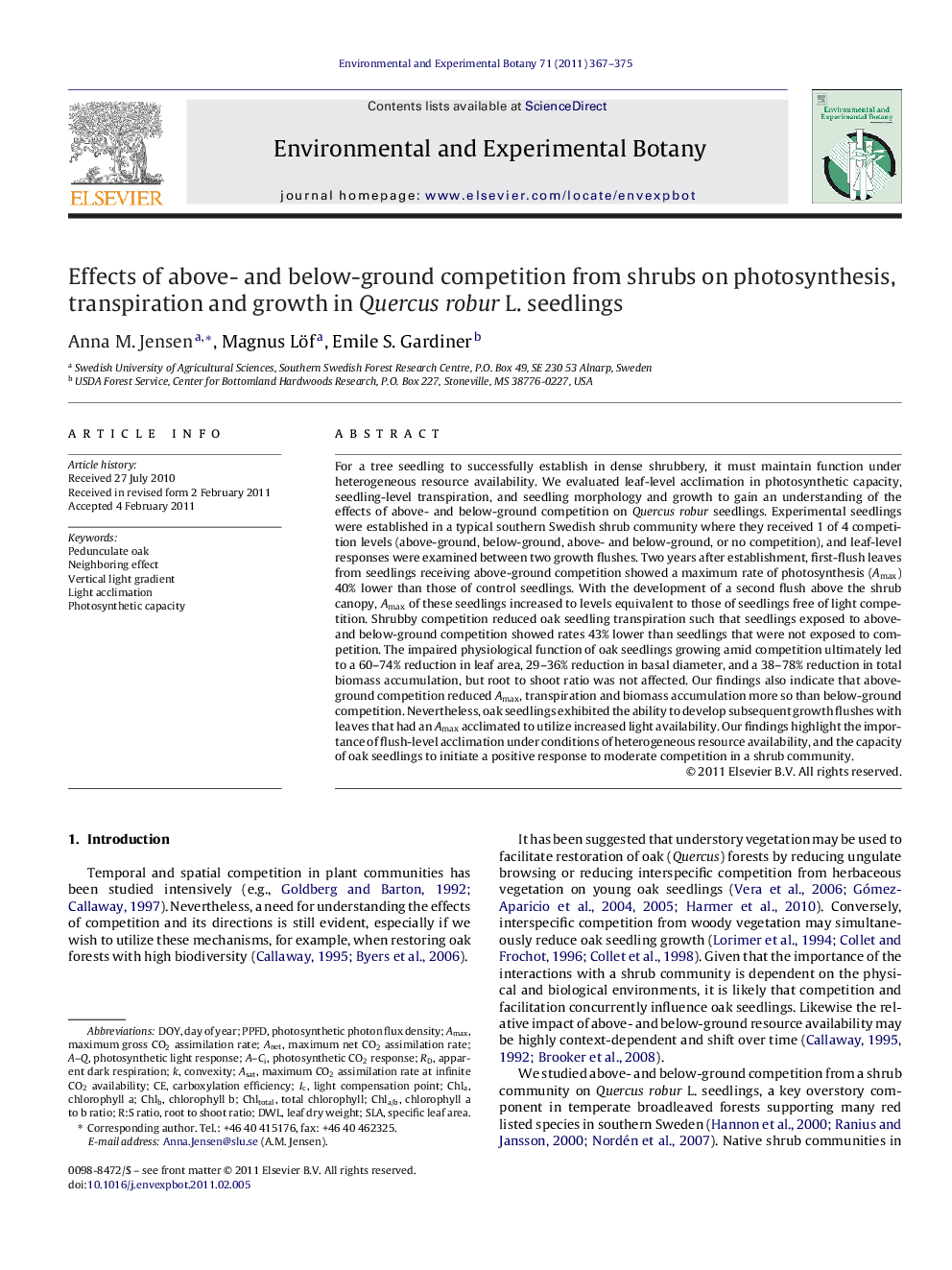| Article ID | Journal | Published Year | Pages | File Type |
|---|---|---|---|---|
| 4554907 | Environmental and Experimental Botany | 2011 | 9 Pages |
For a tree seedling to successfully establish in dense shrubbery, it must maintain function under heterogeneous resource availability. We evaluated leaf-level acclimation in photosynthetic capacity, seedling-level transpiration, and seedling morphology and growth to gain an understanding of the effects of above- and below-ground competition on Quercus robur seedlings. Experimental seedlings were established in a typical southern Swedish shrub community where they received 1 of 4 competition levels (above-ground, below-ground, above- and below-ground, or no competition), and leaf-level responses were examined between two growth flushes. Two years after establishment, first-flush leaves from seedlings receiving above-ground competition showed a maximum rate of photosynthesis (Amax) 40% lower than those of control seedlings. With the development of a second flush above the shrub canopy, Amax of these seedlings increased to levels equivalent to those of seedlings free of light competition. Shrubby competition reduced oak seedling transpiration such that seedlings exposed to above- and below-ground competition showed rates 43% lower than seedlings that were not exposed to competition. The impaired physiological function of oak seedlings growing amid competition ultimately led to a 60–74% reduction in leaf area, 29–36% reduction in basal diameter, and a 38–78% reduction in total biomass accumulation, but root to shoot ratio was not affected. Our findings also indicate that above-ground competition reduced Amax, transpiration and biomass accumulation more so than below-ground competition. Nevertheless, oak seedlings exhibited the ability to develop subsequent growth flushes with leaves that had an Amax acclimated to utilize increased light availability. Our findings highlight the importance of flush-level acclimation under conditions of heterogeneous resource availability, and the capacity of oak seedlings to initiate a positive response to moderate competition in a shrub community.
Research highlights► Competition from shrubs reduces carbon assimilation and growth in oak seedlings. ► Above-ground competition strength was stronger than below-ground competition. ► Leaf photosynthetic capacity was dependent on light availability and flush position. ► Oak seedlings had the capacity to utilize vertical heterogeneous light availability. ► Oak seedlings may cope with moderate competition from a shrub community.
